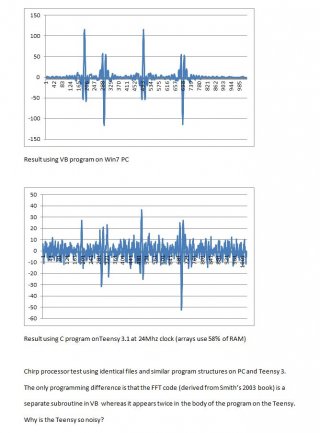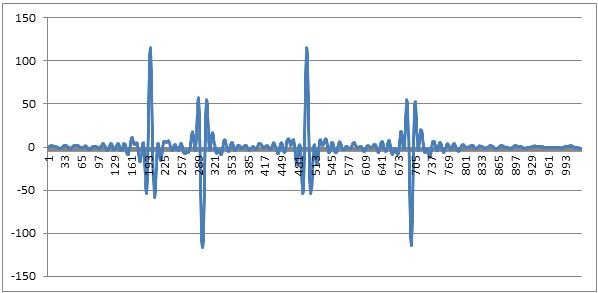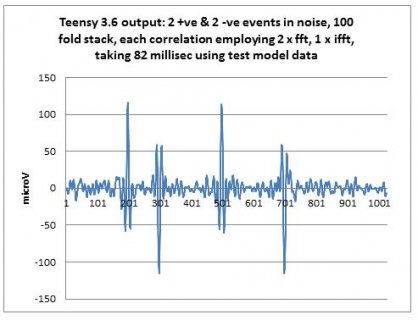randomrichard
Active member

This picture shows a comparison between data files cross-correlated on a PC using a VB program and on a Teensy3.1 with audio shield on which a SD card is used to access the same files. The program on the Teensy is a translation from VB to Arduino C and is designed to recover four events sampled by a chirp transmitter, two positive and two negative. The PC does the job well. The same signals can be seen on the Teensy output but it is very noisy. The program is long and took me months of work and I am unwilling to release it. However, I was wondering if the ARM processor is inherently noisy doing complex FFTs and IFFTs when they are written out in Arduino C code. I have checked for bugs and am pretty sure there are none. I have also checked the file downloads and they are OK.
The FFT code is basically (no pun intended) S W Smith's table 12.4 from his 2003 DSP book. The file downloading is based upon the excellent advice here: http://forum.arduino.cc/index.php?topic=75491.0. I have been unable to use the ARM's CMSIS signal processing facilities which appear to be designed solely for continuous audio processing.



